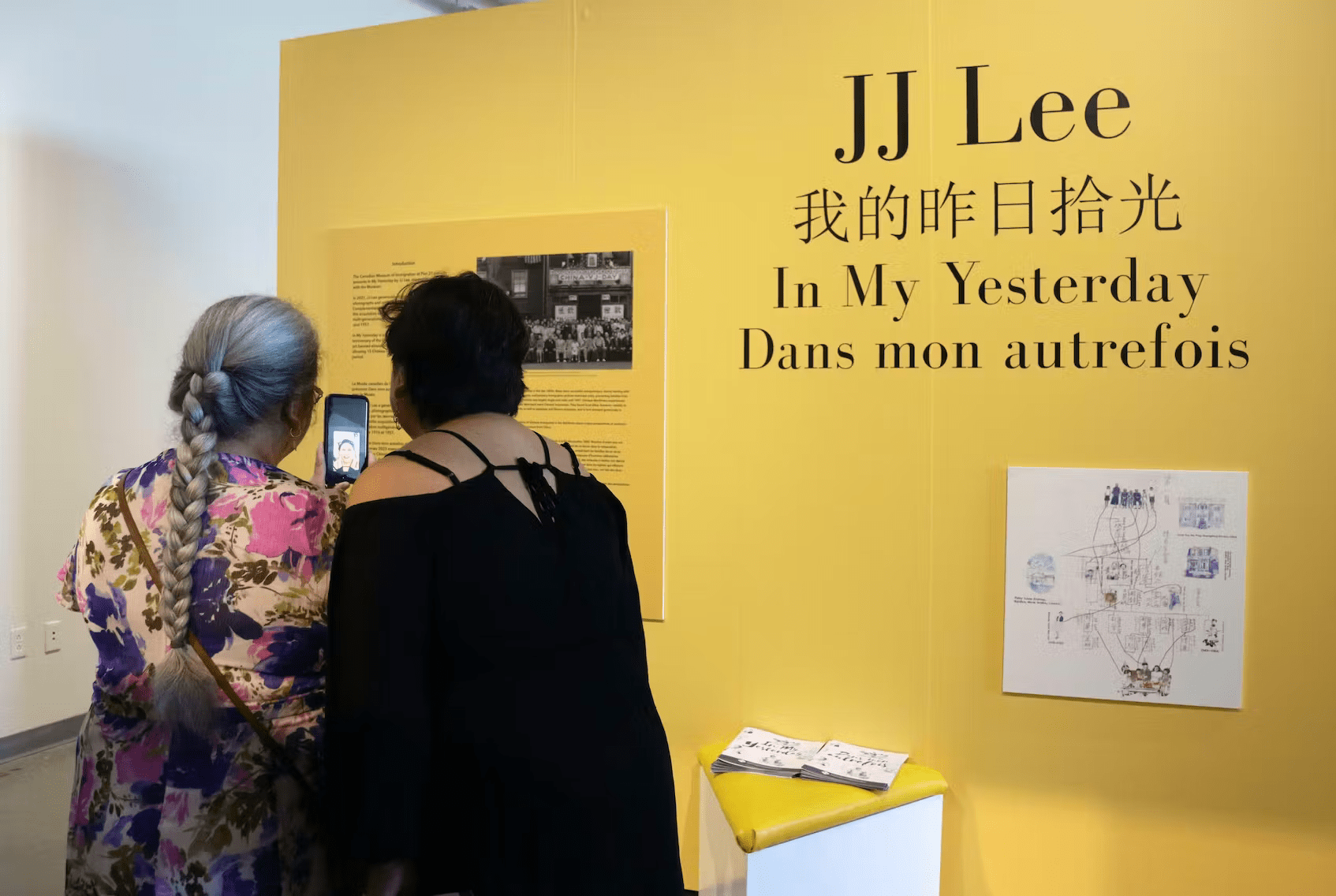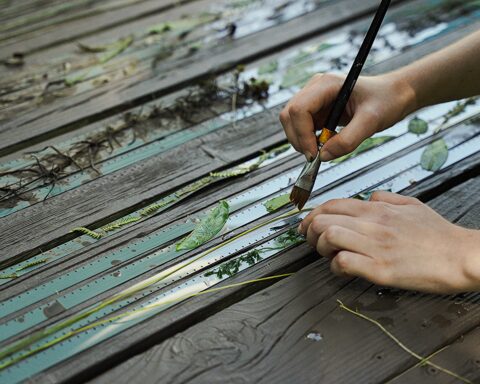While cleaning the attic of her family’s old house in Halifax, artist JJ Lee discovered a treasure trove of artifacts and pictures that her grandfather and father had left behind.
The collection included her grandfather’s head tax receipt, immigration application form, and old passports.
JJ Lee, a second-generation Canadian who was born and raised in Halifax, saw the historic value of the find. JJ Lee, who’s now a professor at the Ontario College of Art and Design University, donated more than 50 documents, archival photographs, and artifacts to the Canadian Museum of Immigration at Pier 21.
With these donated items and by hand-painting copies of old photos and creating animations, JJ Lee’s exhibition “In My Yesterday” came into being.
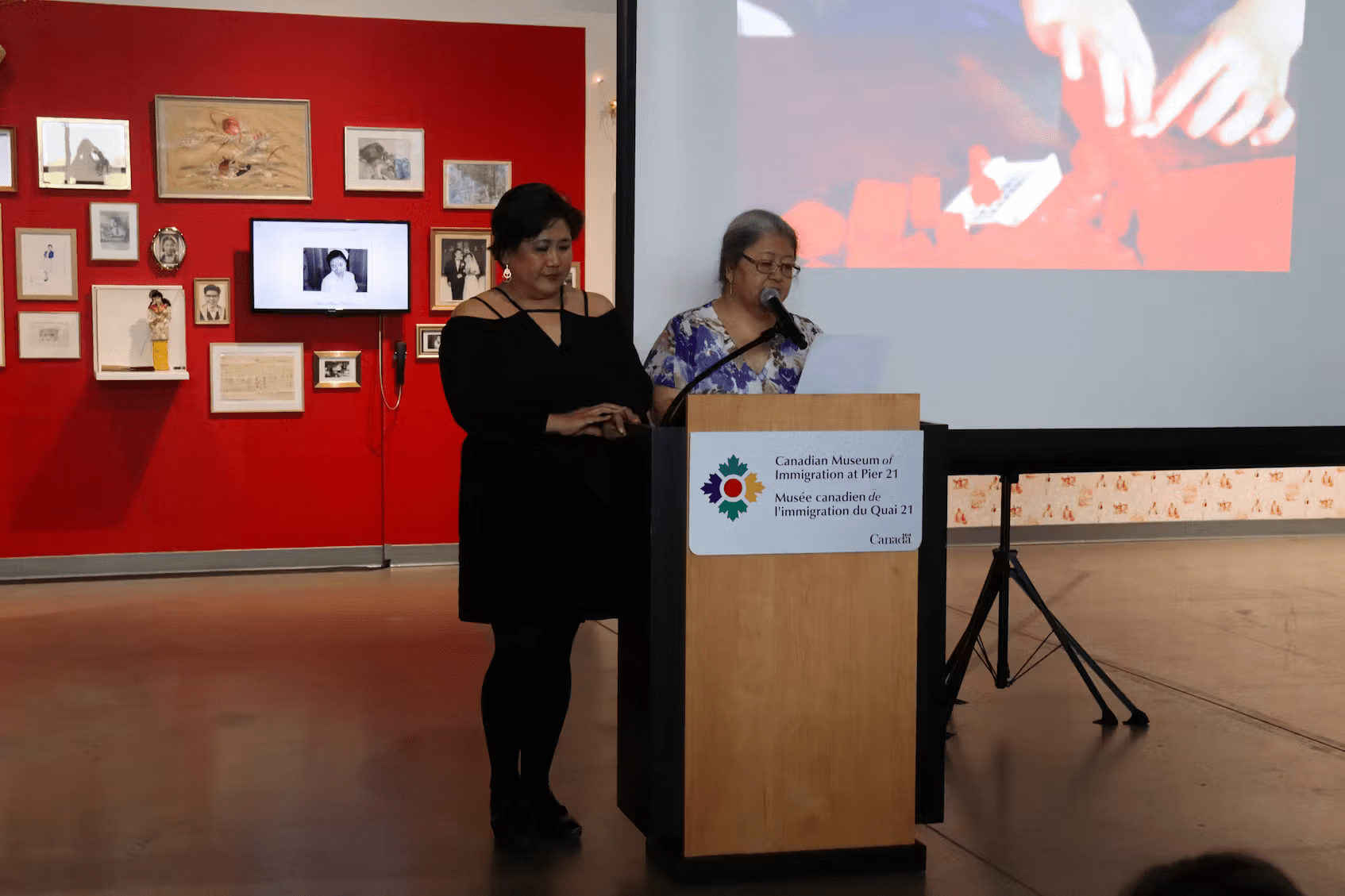
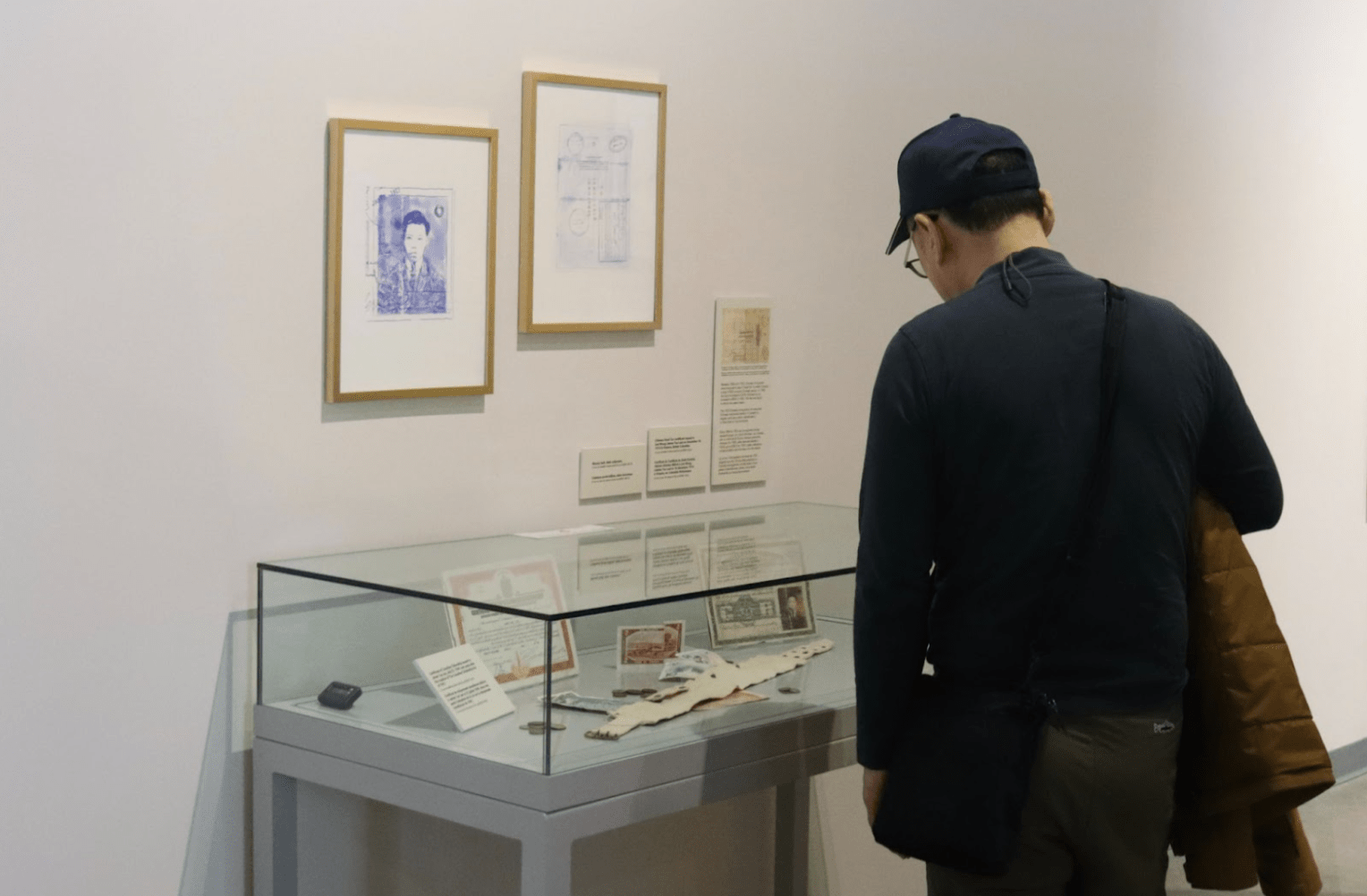
“I was really surprised and shocked and interested because there wasn’t a lot of conversations about the head tax or even my ancestor’s history. So when I found the objects, I knew that I encountered something really special,” JJ Lee said in an interview.
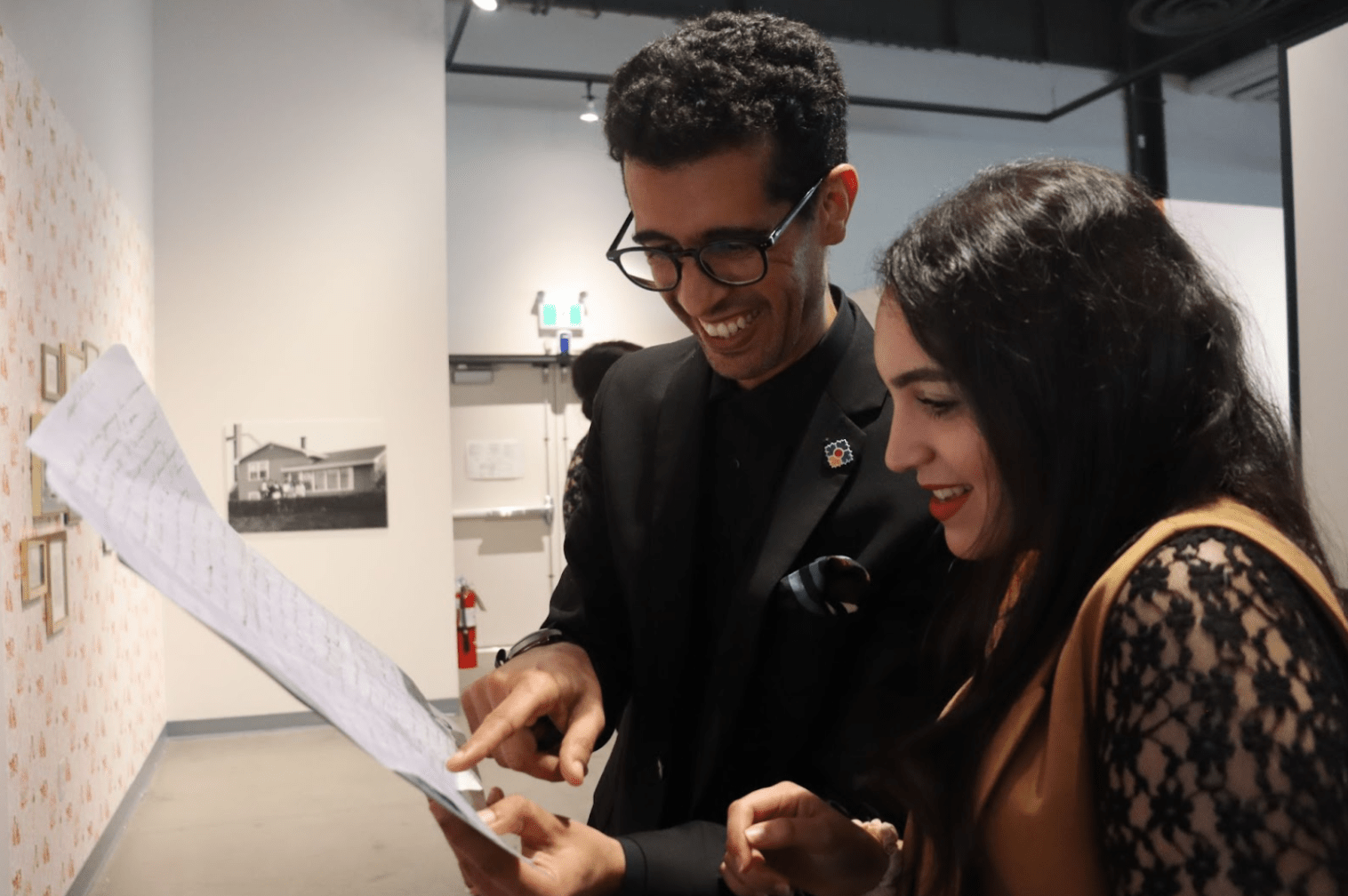
The immigration history of Lee’s family intertwines with the complex web of Canadian laws concerning Chinese immigrants. In 1885, the Canadian government introduced a head tax of $50 per Chinese immigrant, which by 1903 escalated to $500. In 1916, JJ Lee’s grandfather, Wing Lee, arrived in Canada and began his laundry business.
However, after the First World War, the Chinese Immigration Act of 1923 almost wholly prohibited Chinese immigration.
In the span of 23 years, until the abolition of the racial exclusion policy in 1947, only 15 Chinese people immigrated to Canada.
In 1949, JJ Lee’s father and her grandmother came to Canada to reunite with her grandfather. After 18 years of separation, Wing finally saw his wife Hoi Wong. At the age of 18, Fred Lee met his father for the first time. Despite the physical distance that separated Wing from his wife and son, he consistently sent money back to China. “They (Wong and Fred) always knew that he was really caring for them, looking out for them,” JJ Lee said.
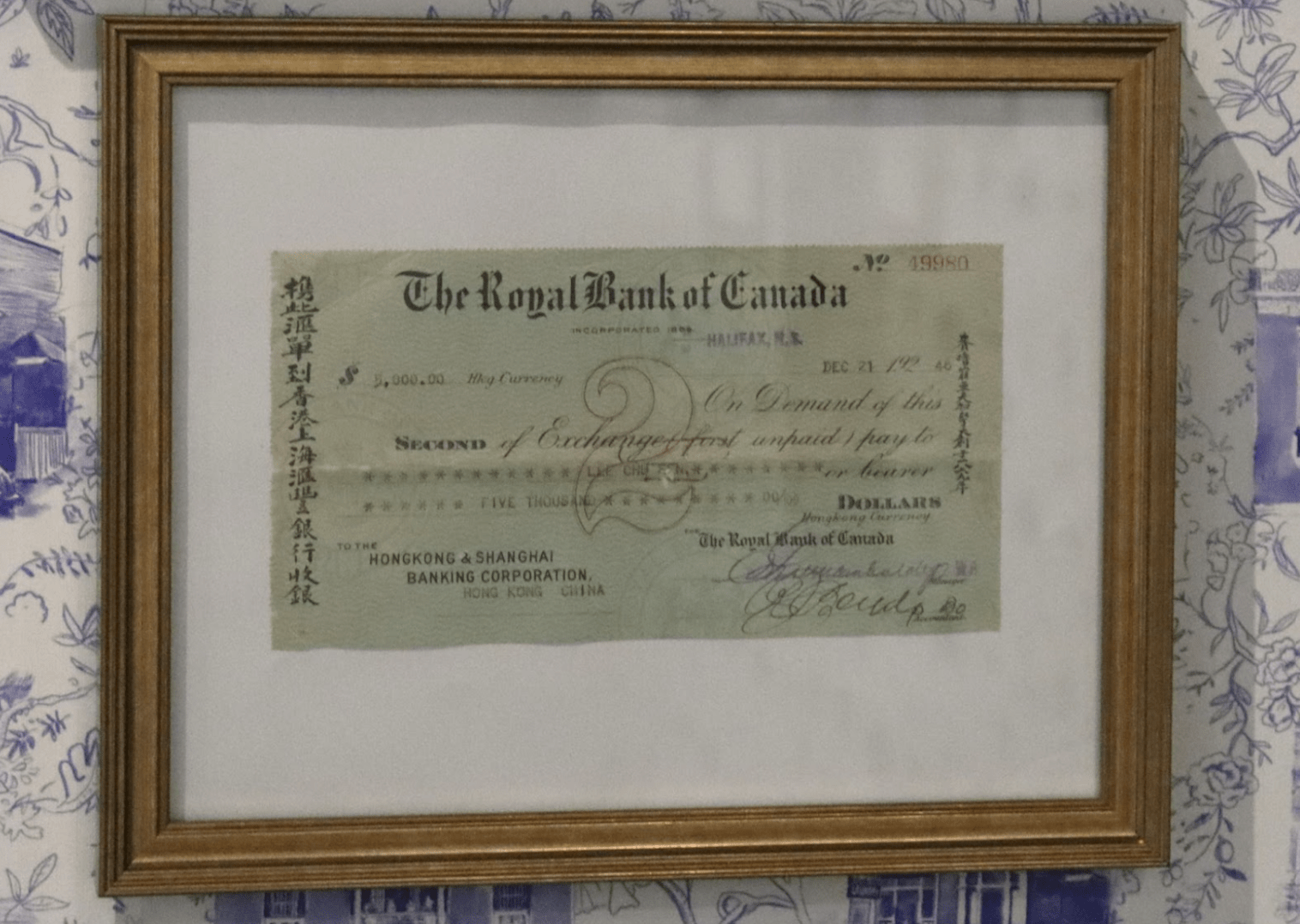
The Canadian government’s history of legally excluding and prohibiting Chinese immigration is not very widely known, even among some Chinese Canadians, JJ Lee said.“I didn’t know much about it (the Chinese Immigration Act) when I was growing up and these kinds of things weren’t really talked about. I think it was just a little too painful, perhaps.
“When I realized all the discrimination and challenges and racism that my ancestors had to endure in order to come to Canada, I was really impressed by their resilience and their desire to make a better life for a family. I have so much more respect for them and other immigrants,” JJ Lee said.
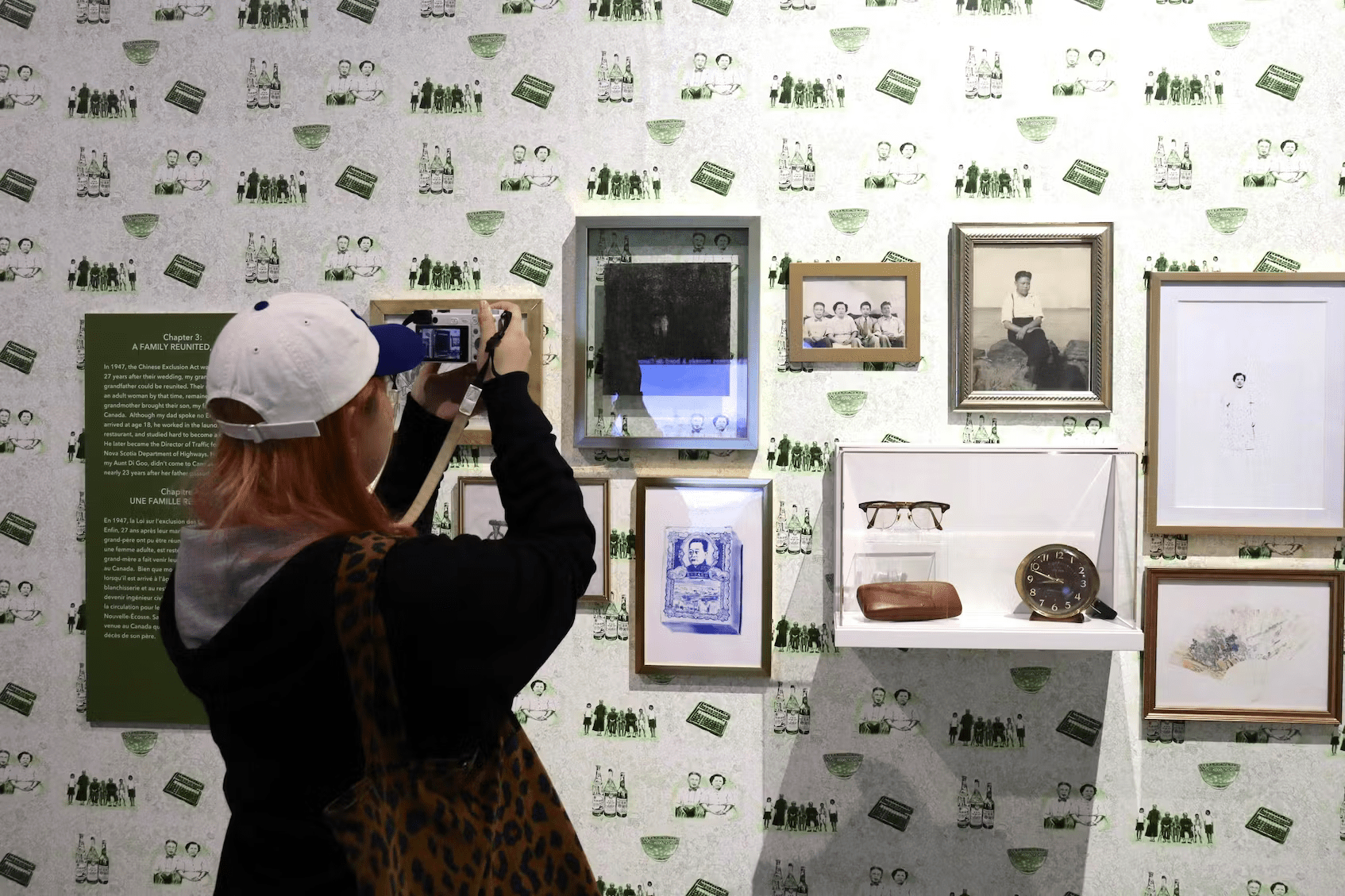
Justina Yu is JJ Lee’s student and the archivist for this exhibition and its collections. Her parents are Chinese immigrants.
“We learned about it (Chinese Immigration Act) very briefly in school,” Yu said. “However, obviously, there’s not much attention on Chinese-Canadian immigration stories.
“Through this exhibition, I was able to learn so much about that,” Yu added, saying later that ”… we never hear these personal stories and how families struggled or managed. We just hear [about] the general years and dates of all these events.”
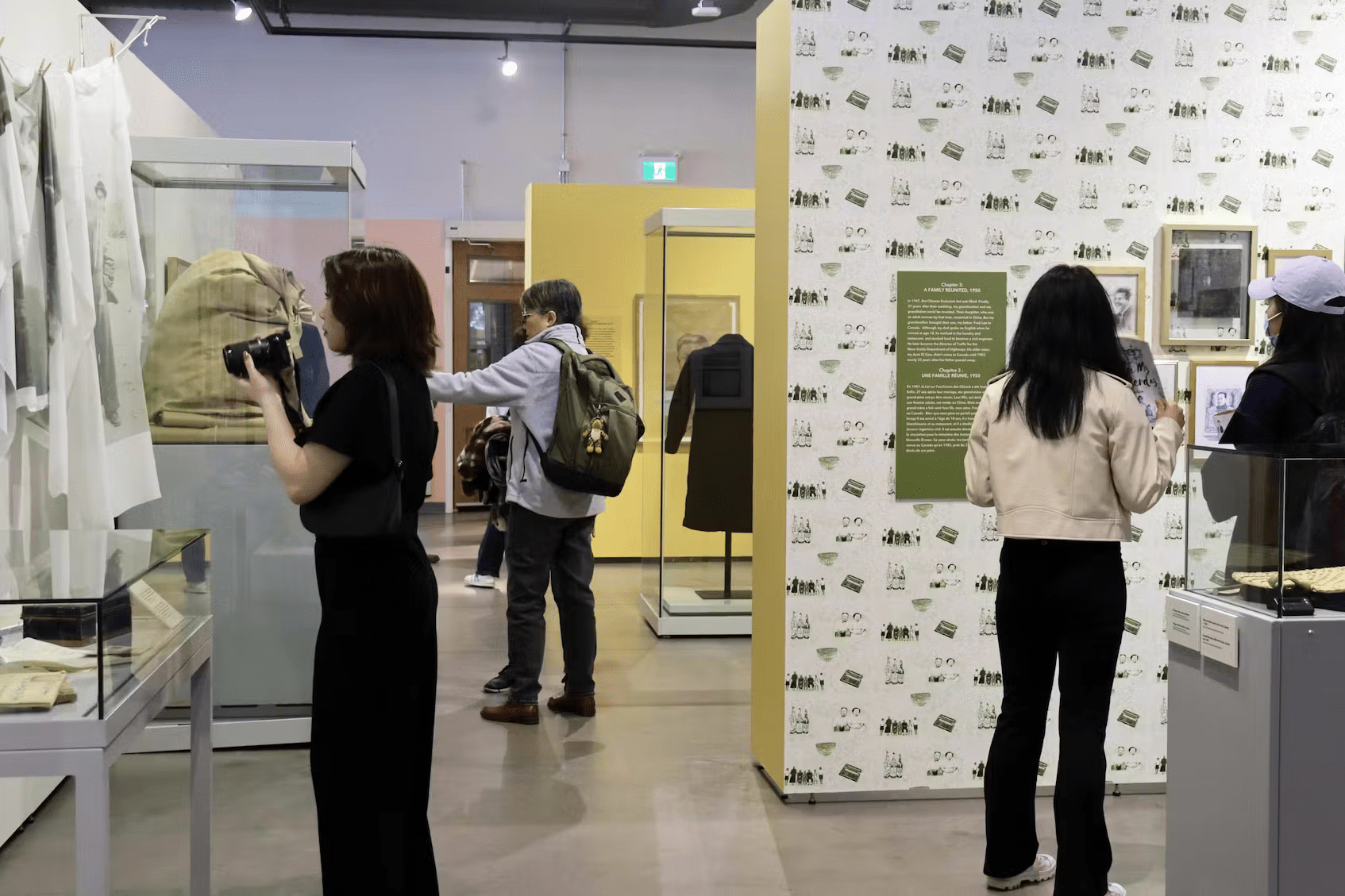
In this exhibition, all of JJ Lee’s paintings are inspired by her grandfather’s legacy. In the attic, she found a laundry bag full of brown paper that her grandfather used to wrap clean clothes when he ran a laundry business.
“All the drawings that are in that show are paper that was found in the house. So I’m trying to honour its history and just really talk about that material itself, paper has its own story. It was sitting up in the attic for decades just waiting to be drawn on,” JJ said, “I went back to Toronto to teach and then I started drawing and drawing and I couldn’t stop …So that’s why we have this today.”
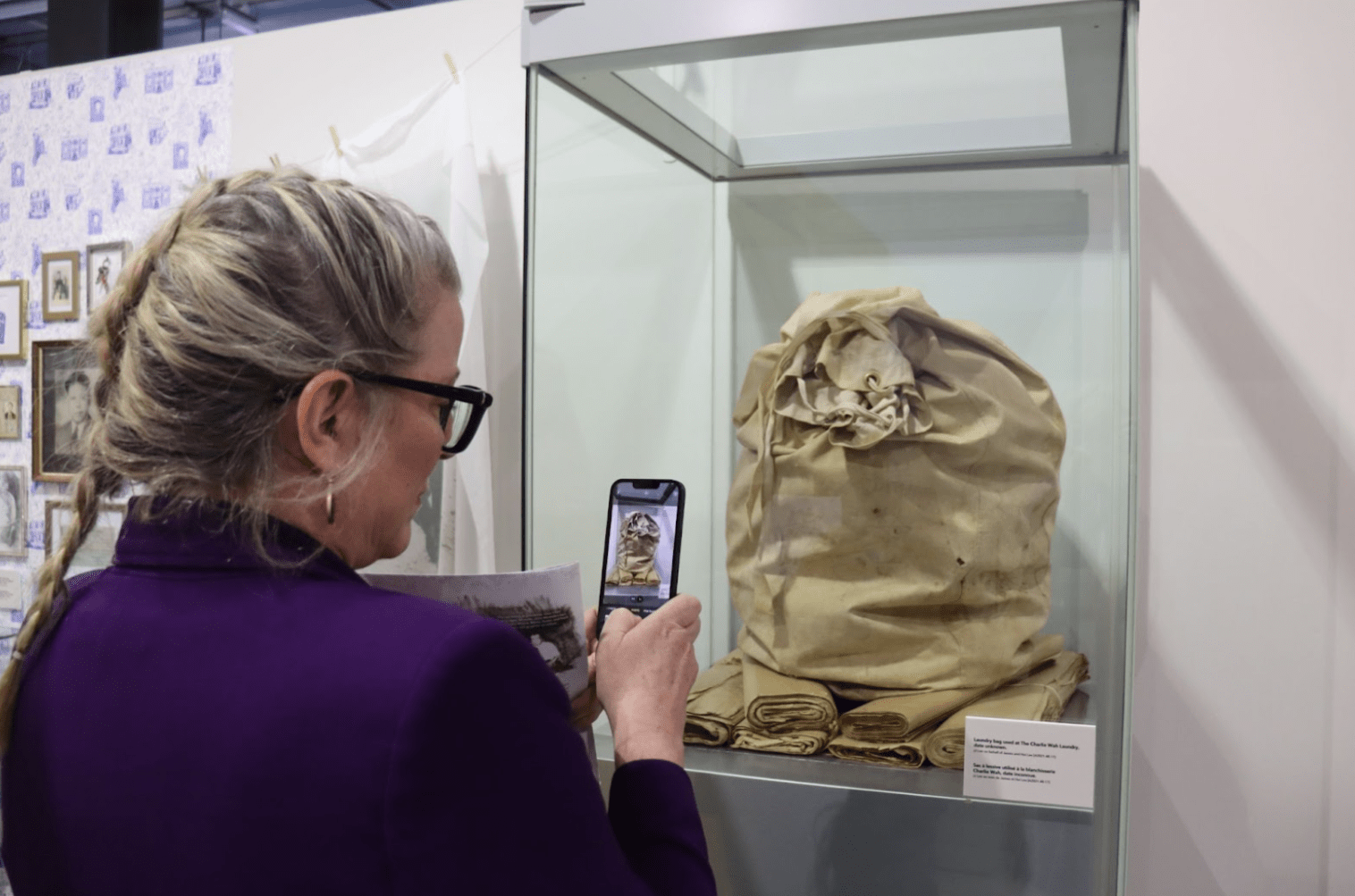
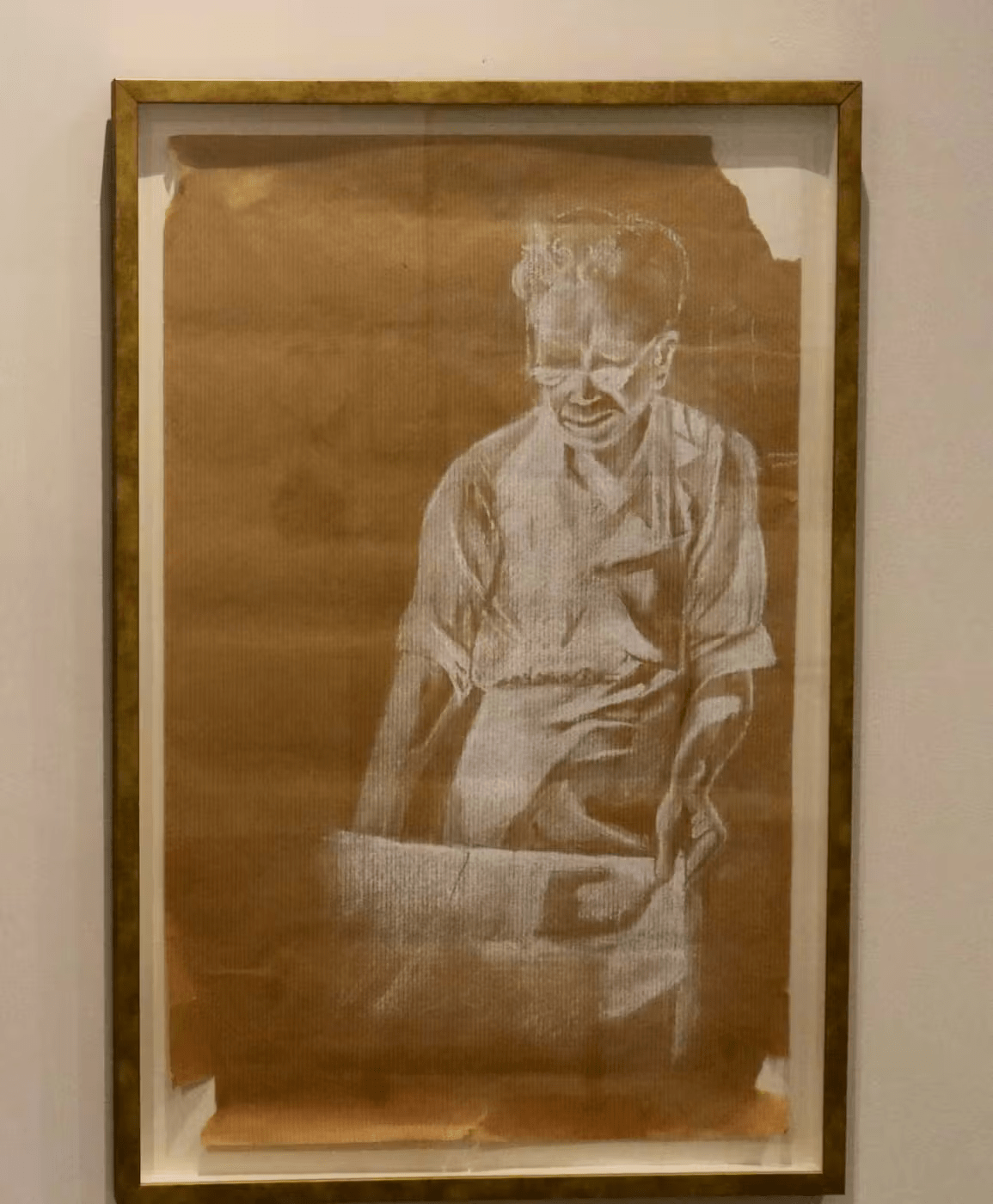
JJ Lee’s grandfather passed away before she was born. JJ Lee took the drawings on those papers that Wing Lee had left behind and animated them, with the communication between the grandfather and granddaughter transcending time and space, bridging the gap between generations.
“When I was making this artwork, I felt something so deep and profound that I almost felt like my ancestors were talking to me. And they were like, JJ, you got to tell this story, you should tell this story,” JJ Lee said.
JJ Lee hopes this exhibition could inspire visitors to explore their own family history and realize how it affects them. She plans to move this exhibition to other cities like Toronto or Vancouver. “Because it’s an immigrant experience that I think a lot of people can really relate to, whether they came four generations ago or come recently,” JJ Lee said.
“I didn’t live through personally, the exclusion act or immigrating or any of those hardships, I still felt like it was part of my history. It still has an effect on me and my personal life and my sibling’s life today.”
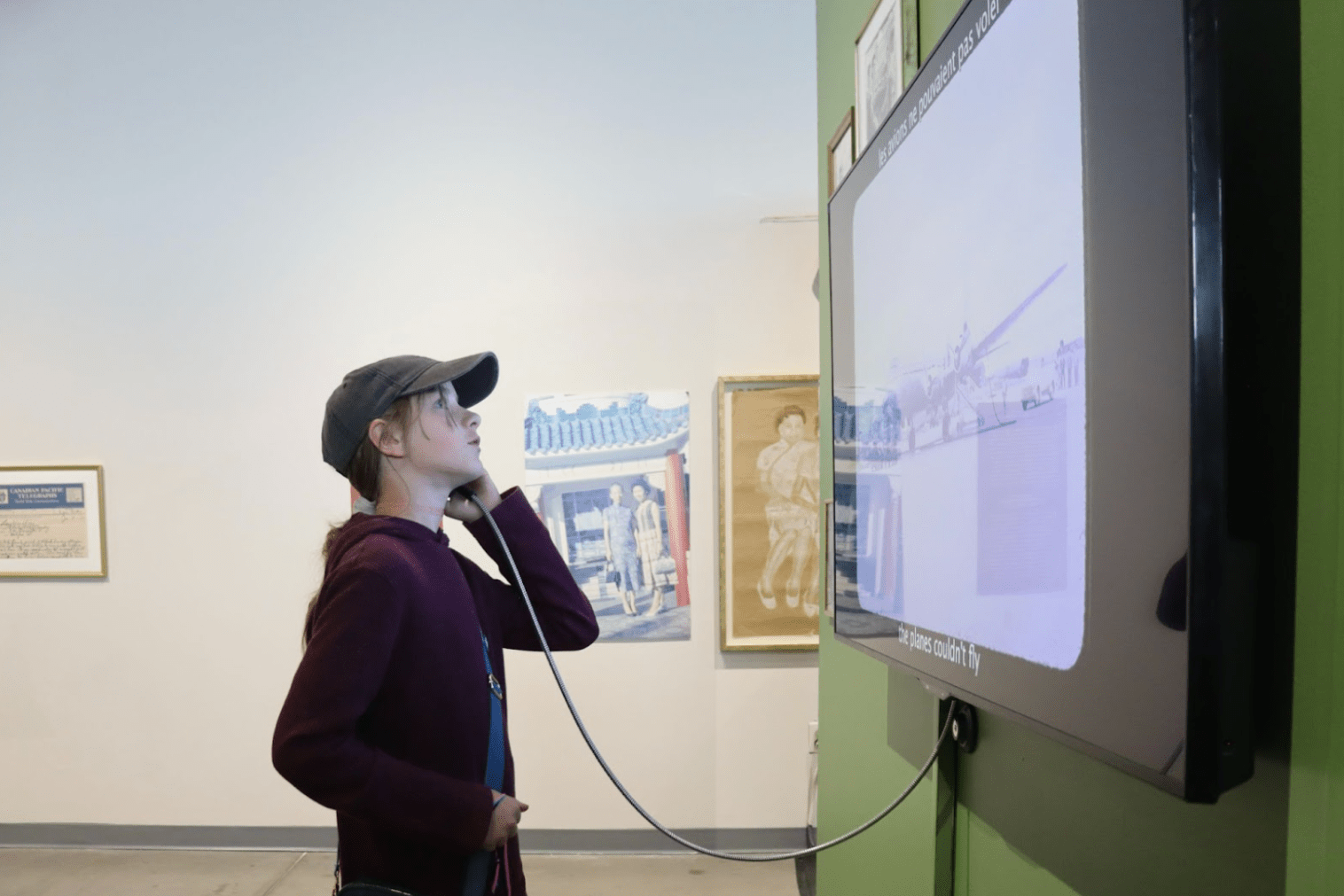
The JJ Lee In My Yesterday exhibit opened May 13 and runs until July 23 at the Canadian Museum of Immigration at Pier 21.
_____________________________________________________
– Xixi Jiang is a New Canadian Media correspondent based in Halifax, Nova Scotia. This story and photo are part of a partnership with SaltWire.

Xixi Jiang
Xixi Jiang is a third-year journalism student at the University of King's College in Halifax. She's from China and is passionate about writing news stories related to immigration, international students, women's rights, and anti-racism.

